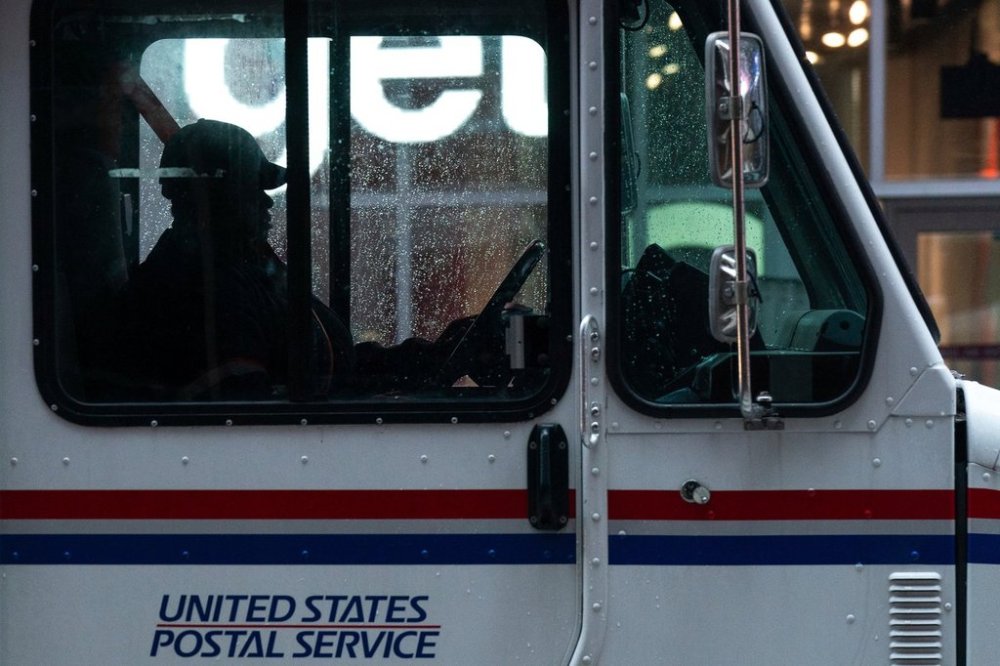Census Bureau to test using postal workers as census takers in 2030 field trials next year
Advertisement
Read this article for free:
or
Already have an account? Log in here »
To continue reading, please subscribe:
Monthly Digital Subscription
$1 per week for 24 weeks*
- Enjoy unlimited reading on winnipegfreepress.com
- Read the E-Edition, our digital replica newspaper
- Access News Break, our award-winning app
- Play interactive puzzles
*Billed as $4.00 plus GST every four weeks. After 24 weeks, price increases to the regular rate of $19.00 plus GST every four weeks. Offer available to new and qualified returning subscribers only. Cancel any time.
Monthly Digital Subscription
$4.75/week*
- Enjoy unlimited reading on winnipegfreepress.com
- Read the E-Edition, our digital replica newspaper
- Access News Break, our award-winning app
- Play interactive puzzles
*Billed as $19 plus GST every four weeks. Cancel any time.
To continue reading, please subscribe:
Add Winnipeg Free Press access to your Brandon Sun subscription for only
$1 for the first 4 weeks*
*$1 will be added to your next bill. After your 4 weeks access is complete your rate will increase by $0.00 a X percent off the regular rate.
Read unlimited articles for free today:
or
Already have an account? Log in here »
The Census Bureau plans to use U.S. postal workers as census takers in at least two locations during field tests next year for the 2030 census, which will determine political power and federal funding.
The statistical agency said Friday in a notice to be published next week that it will test and assess the feasibility of using postal carriers to knock on doors and collect information about households for the once-a-decade head count of every U.S. resident.
The field tests will be conducted next year in western Texas; tribal lands in Arizona; Colorado Springs, Colorado; western North Carolina; Spartanburg, South Carolina; and Huntsville, Alabama. The unpublished Federal Register notice didn’t say which locations would test postal workers as census-takers who interview people about the race, sex, age, type of housing and relationships in their households.

The idea of using postal workers as census takers during the U.S. head count, often described as the largest civilian mobilization in the nation, has been kicking around for some time, given the knowledge that postal workers often have of the neighborhoods where they deliver mail. In 2011, though, the U.S. Government Accounting Office said using postal carriers for the census at U.S. Postal Service pay wasn’t cost effective since, at the time, urban mail carriers were earning $41 an hour compared to temporary census-taker pay of $15 an hour.
“Because of the difference in pay rates and the large number of staff hours involved, it would not be practical for mail carriers to perform census duties in lieu of census workers because of the higher costs and disruption it would cause to U.S. mail service,” the GAO report said.
The U.S. Postal Service has helped out in other ways by delivering notices about the census’ start and census questionnaires to households, as well as helping to update the bureau’s address list.
The six 2026 test sites were picked for a variety of reasons, including a desire to include rural areas where some residents don’t receive mail or have little or no internet service; tribal areas; dorms, care facilities or military barracks; fast-growing locations with new construction; and places with varying unemployment rates.
The statistical agency hopes the practice counts will help it learn how to better tally populations that were undercounted in the 2020 census; improve methods that will be utilized in 2030; test its messaging, and appraise its ability to process data as it is being gathered. Figures gathered from the census are used to divvy up congressional seats among the states every decade and help guide $2.8 trillion in annual federal spending.
The Census Bureau said in Friday’s notice that it anticipates almost 445,000 people participating in the practice counts, either by responding online, by phone or by mail, or by being interviewed by a census taker.
___
Follow Mike Schneider on the social platform Bluesky: @mikeysid.bsky.social

